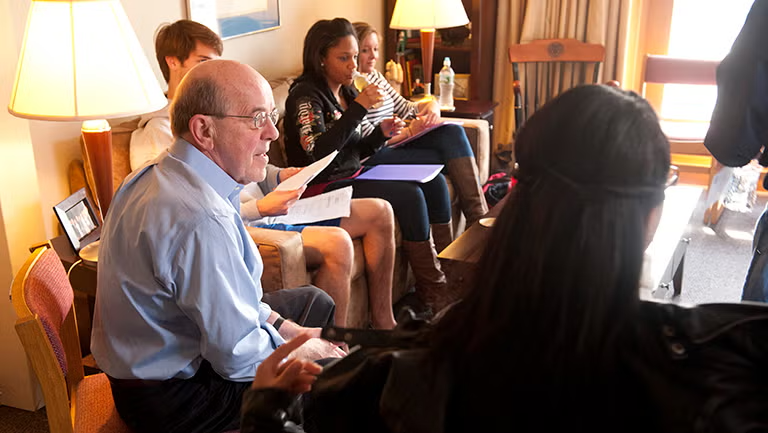Department History
Studies in religion have always been a critically important part of a Georgetown education, even as the rationale for such study has changed.

In the first century, religious education was intended to serve the moral development of Georgetown students. In “The Prospectus of 1798,” the early directors of Georgetown stated that their educational goals were “to implant virtue and destroy in their pupils the seeds of vice.” (McFadden, 145).
This idea continued through the first part of the 20th century, as is seen in the 1937 catalog of Georgetown, which stated that “however important the mental development of a student may be, his moral development is of far greater importance…“
Religious instruction, therefore, which alone can develop and strengthen the will and induce good habits, is of prime importance to Georgetown” (150 McFadden, 137). By the mid-century, the focus had shifted toward a religious formation that was intended to integrate all dimensions of students’ lives and prepare them for a life of service to church and society. In the last part of the 20th century, an increasing emphasis was placed on the study of religion as a proper academic enterprise, providing students with the critical tools needed to understand religion with intellectual sophistication. As is evidenced in courses like the Problem of God, formation concerns remain part of this academic instruction, as courses invite students to bring these critical apparatuses and their deepening understanding of religion into engagement with their own life experiences and worldviews.
The department developed out of this evolution of religious studies at Georgetown. For much of Georgetown’s history, the study of religion took the form of religious instruction in Catholicism and was performed as part of the normal responsibilities of the Jesuit faculty. The background in theology that was part of every Jesuit’s training was seen as sufficient to perform the task of religious instruction. However, as the study of religion at Georgetown came to be seen as a serious academic enterprise, the training required for its instructors paralleled that of other departments; Ph.D.s from universities took the place of seminary M.Div.’s and S.T.L.’s. In addition, as the study of religion moved from simple instruction in Catholicism to a proper academic exploration, the department expanded its research focus to include diverse religious traditions.
The result is a department with approximately 30 scholars, from the top institutions of scholarship in religion such as Emory, Harvard, Chicago, and Yale, doing research in diverse and interdisciplinary areas like religion and science, formation and Confucian studies, Christian and interreligious engagements, and feminism and rabbinics.
William C. McFadden, SJ “ ‘Catechism at 4 for All the Schools’: Religious Instruction at Georgetown,” William C. McFadden, ed. Georgetown at Two Hundred: Faculty Reflections on the University’s Future (Washington, DC: Georgetown University Press, 1990), 143-168.